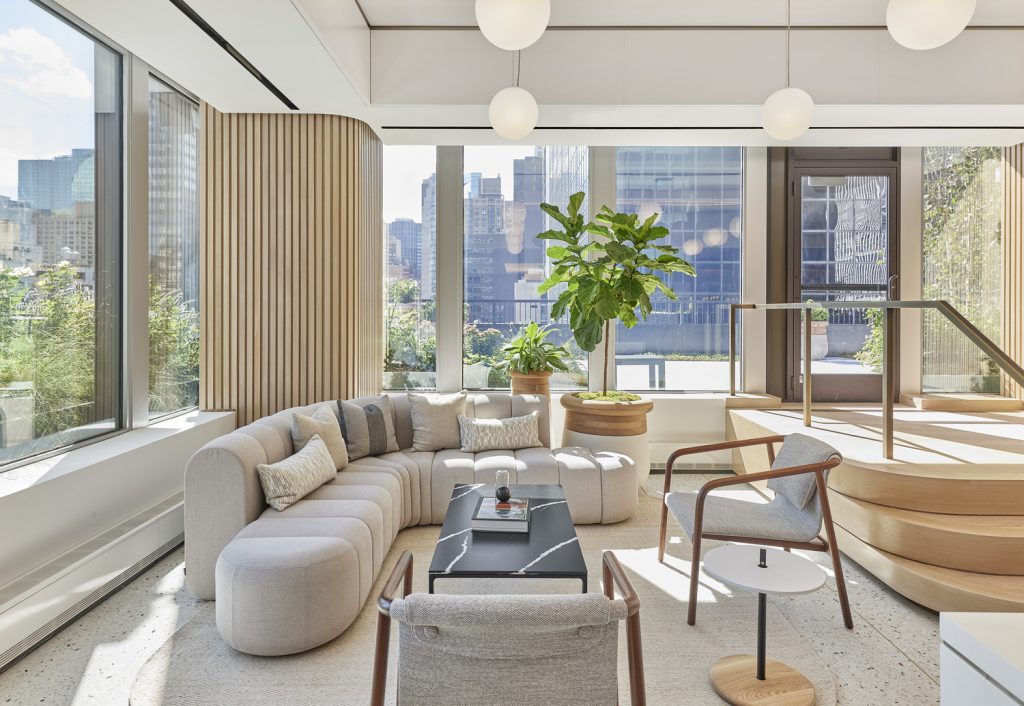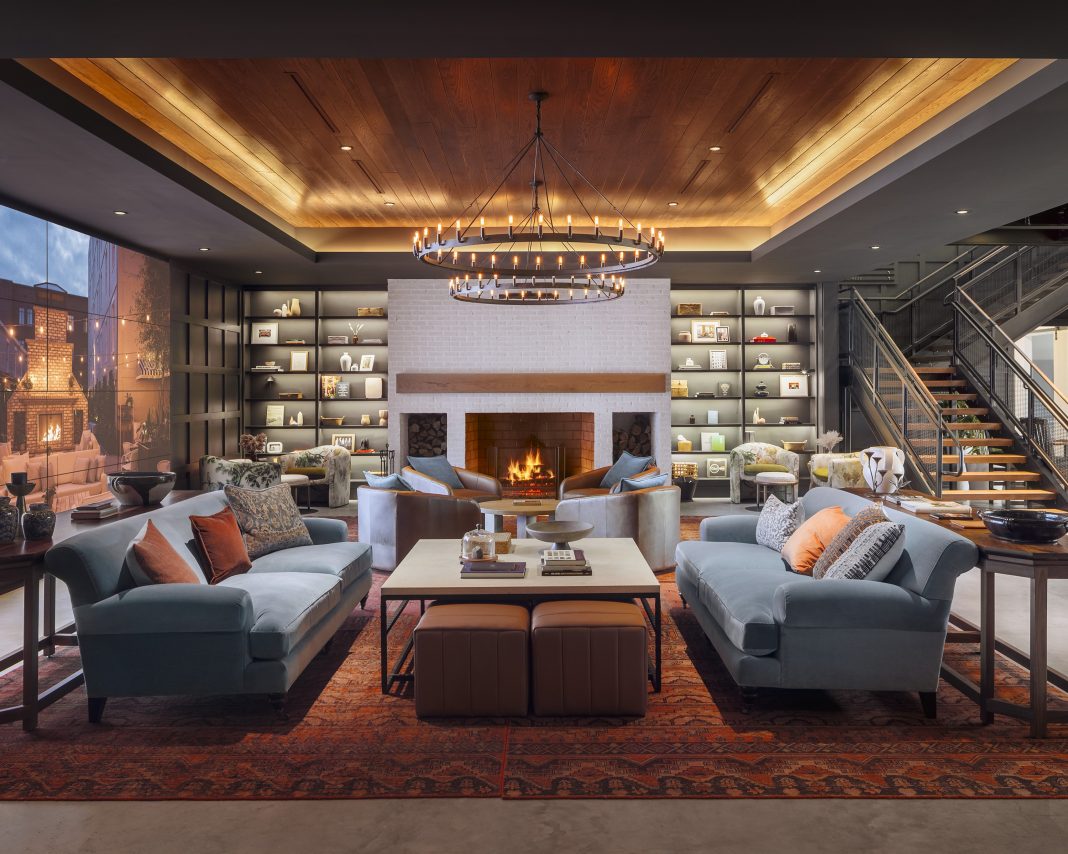Design Collective’s Deb McLaughlin and Erin King discuss how workplace design can learn from the hospitality industry.
It’s no secret that hospitality has integrated its way into the work place. Buzzwords such as flexibility and well-being have forged the gap between professional and personal life. As a result, offices have been transformed to reflect these concepts. To challenge this new normal, organizations can begin to look several steps ahead by researching hospitality trends and studying what other industries are advantageously practicing in order to improve their office model.
This goes beyond traditional approaches by genuinely inquiring, “What do people want?” The hotel industry has successfully and strategically molded their environments to be inviting, convenient, and relatable, accurately encompassing all that hospitality is. Imagine the traditional workplace taking the form of hotel concepts through atmosphere, connection, and design elements, while simultaneously combining it with the function offices require. There is opportunity for the workplace to lean even more into what hospitality actually looks like – with a fresh twist.
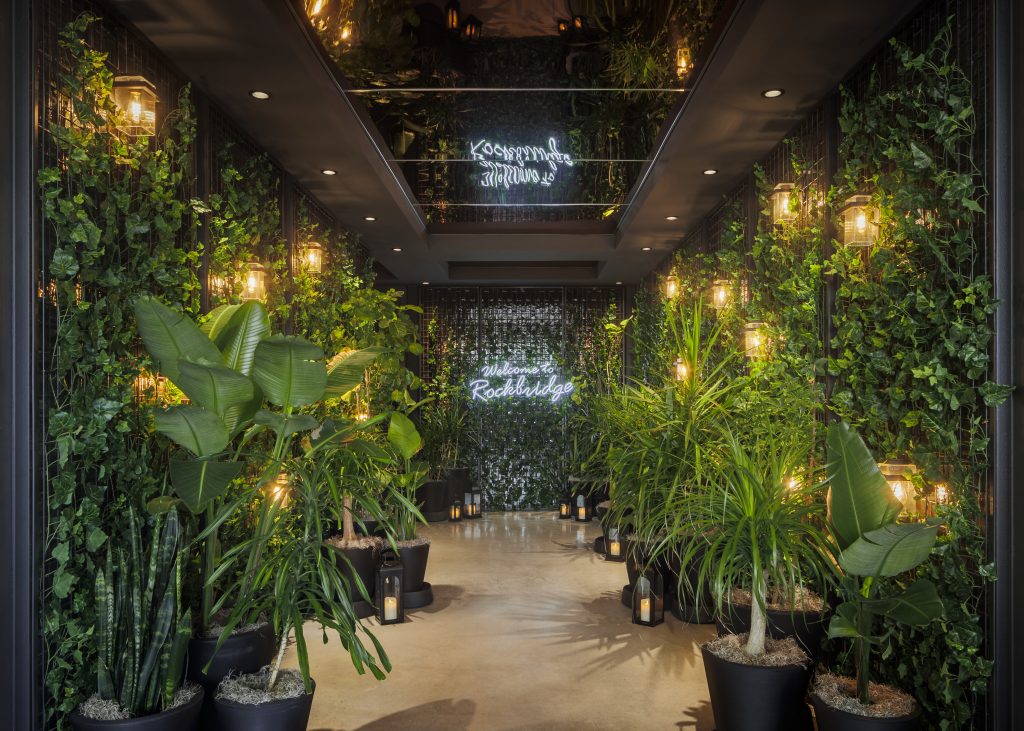
Immersion
First impressions matter. It’s what determines future engagement from clientele and the tone of the remaining office spaces. Using visuals, sound, textures, light, and atmospheric qualities can optimize a brand’s image, saturate newcomers in their environment, and promote engagement. Thoughtful storytelling can weave through these elements, enhancing brand identity while also inviting others to participate in their story.
These strategies can lend a hand in creating approachable, enriching, and well-crafted spaces that lean into comfortable atmospheres. CEO & Co-Founder Jim Merkel of Rockbridge said, “We wanted to create an office environment that was consistent with what we do and who we are… that felt like a hotel experience, where we have a lot of public space and it is very inviting to come in.”
Putting energy into developing dignified spaces for the office displays intentionality and the desire to serve employees. Here, the details are meaningful.
Consider carving out moments of engagement such as tactile design installations, social break-out spaces that implement the outdoors, grand design elements, and a defined hierarchy of space types that stimulate the senses and create connections. Spaces have the power to become experiential and allow users to develop their own story and create a sense of place.
Leaning into Leisure
The workplace requires additional space types that cater to the preferences, work styles, and desires of a specific team. This wide spectrum of need creates an opportunity to expand upon typical office programming and develop social and wellness neighborhoods that encourage movement, collaboration, and socialization.
A space like this could become a central hub in the heart of the office with several plush furniture pieces, suggesting that this space is dedicated to collaboration. Casual, alternative meeting spaces outside of a conference room can foster impromptu socializing that welcome conversation and create a moment of refuge from the demands of work. Likely, many individuals will ebb and flow through the heart of the office, forming a perfect moment to spark up a conversation with a fellow colleague.
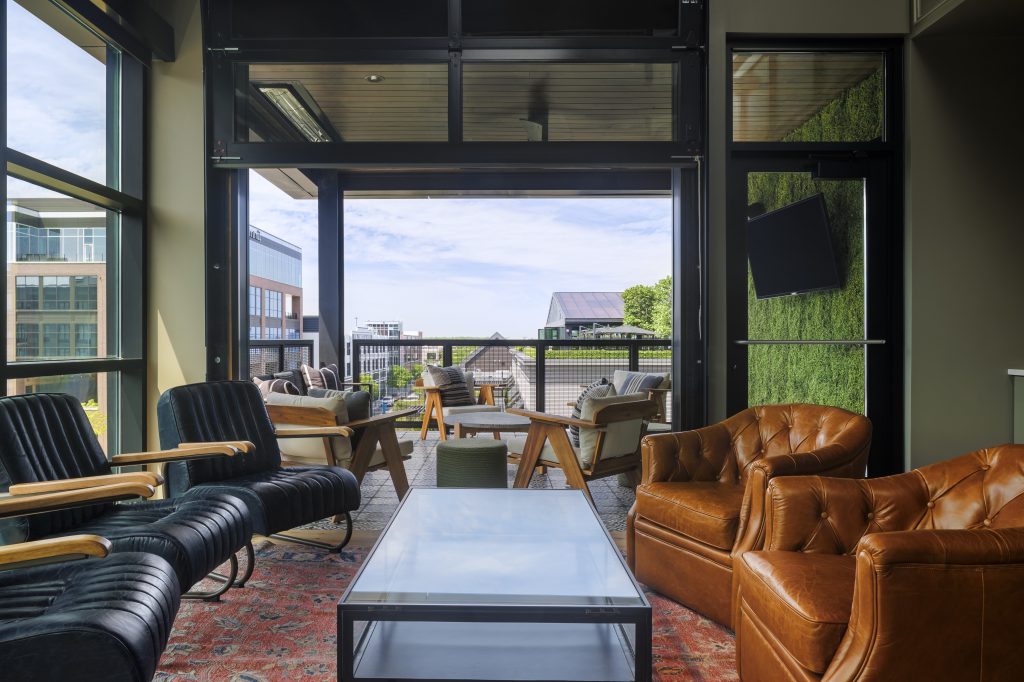
Engaging the outdoors can create further socialization opportunities while also leaning into wellness. Implementing large, open windows that reveal natural light and outdoor terraces that bring the outside in encourage people to engage in spaces around them. Presenting a variety of space types create a draw, as they are likely spaces that clients find outside of the office or in their own homes. The divide between home and work life begin to become blurred as these zones are applied and hand-selected by each team member.
Placemaking
This is all about carving spaces. Beyond establishing convenient zones for staff to craft their workday, it is important to develop these zones into neighborhoods, expanding upon the idea of choice. This idea embraces the thought that each and every member of the office should have full authorship of their workday, utilizing the palette of amenities offered.
Continuing the conversation regarding wellness and social zones, these spaces can be amplified by introducing options. Wellness areas may have both a respite room and a gym while social areas may incorporate a range of formal to casual settings, such as a traditional meeting place to a bar filled with light bites and beverages. While placemaking can certainly happen within social and leisure areas, it is just as important to offer an array of work spaces.
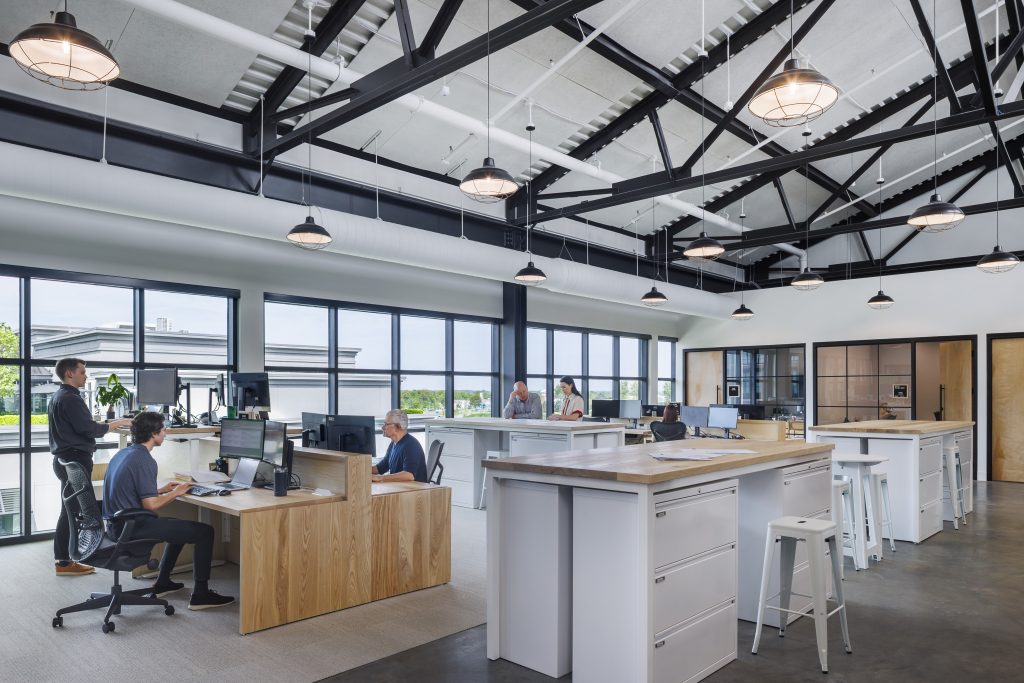
Different types of work drive what spaces people use, requiring a specific function for each zone. Imagine balancing both moments of focus and opportunities for collaborative open offices and lounge space. This feels more personalized and plays into the experience of a hospitality-driven space. This allows for each space to be carefully curated, paying homage to the company brand but also giving those the opportunity to make their mark on their environment.
What makes an organization truly unique is their approach to thoughtful details, subtle branded moments, and unique design touches that fully embrace company culture.
People desire to be part of a community and have the ability to curate their lives, and this includes time spent in the office. Jim Merkel said, “Our team feels at home and brings their families here to see our office, and the next generation of team members want to be here.”
Hospitality-driven spaces have become an integral part of office design, fostering connection, well-being, and a sense of togetherness. The invitation to enter a welcoming environment, coupled with the ability to curate a personal experience, is a powerful tool to for shaping a positive workplace atmosphere.
Want to learn more about hospitality’s influence? Check out:
Alluring Tenants with Reimagined Properties and Hospitality-Infused Amenities
